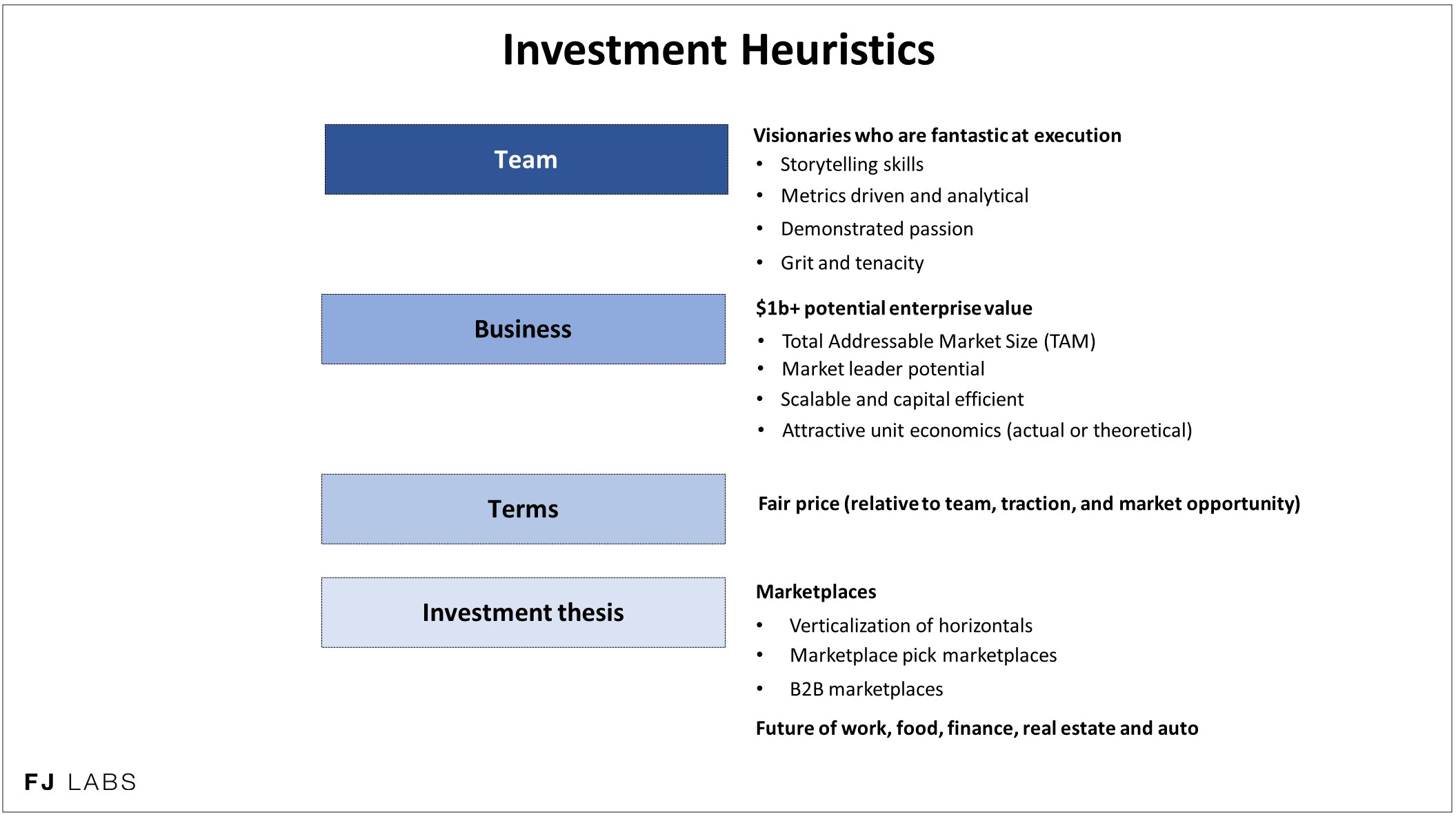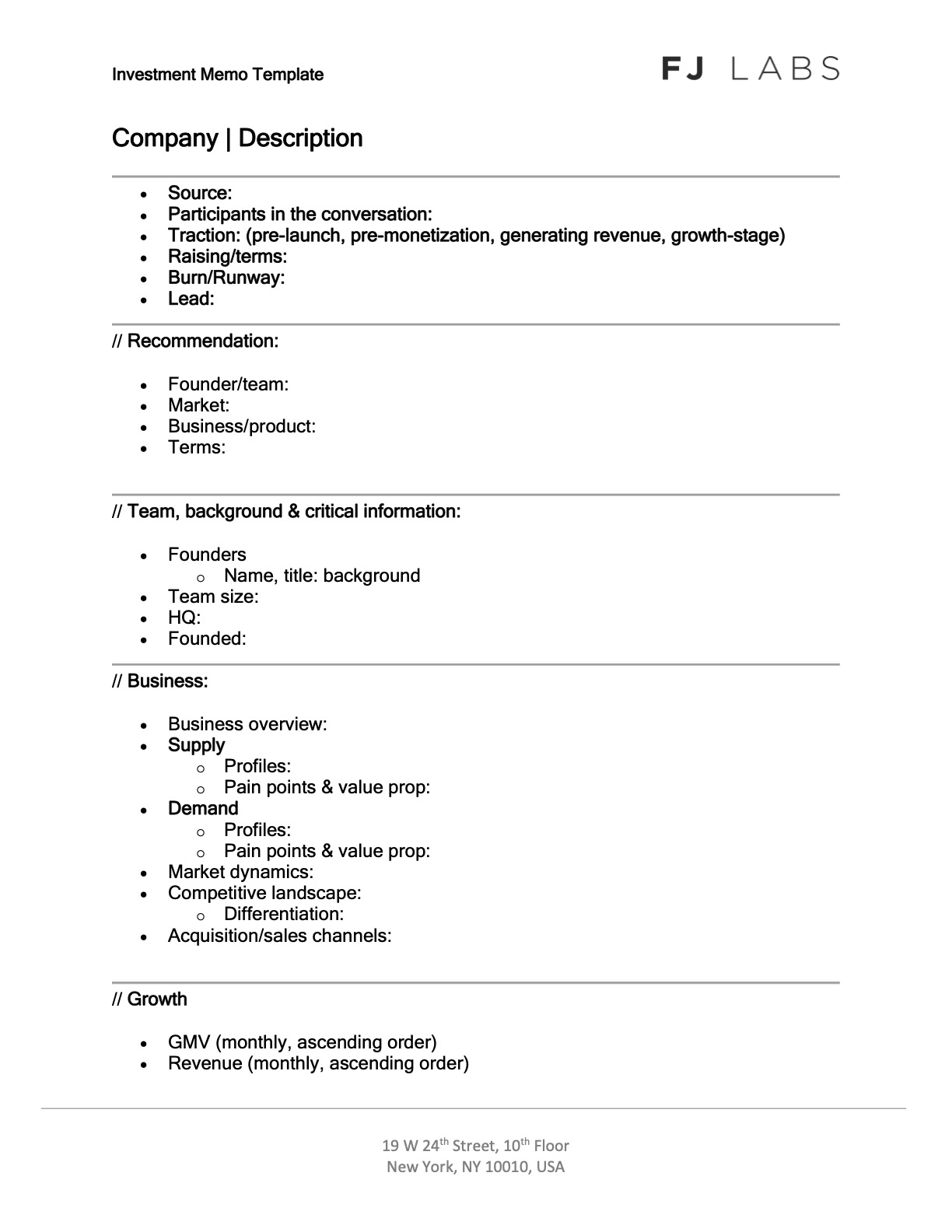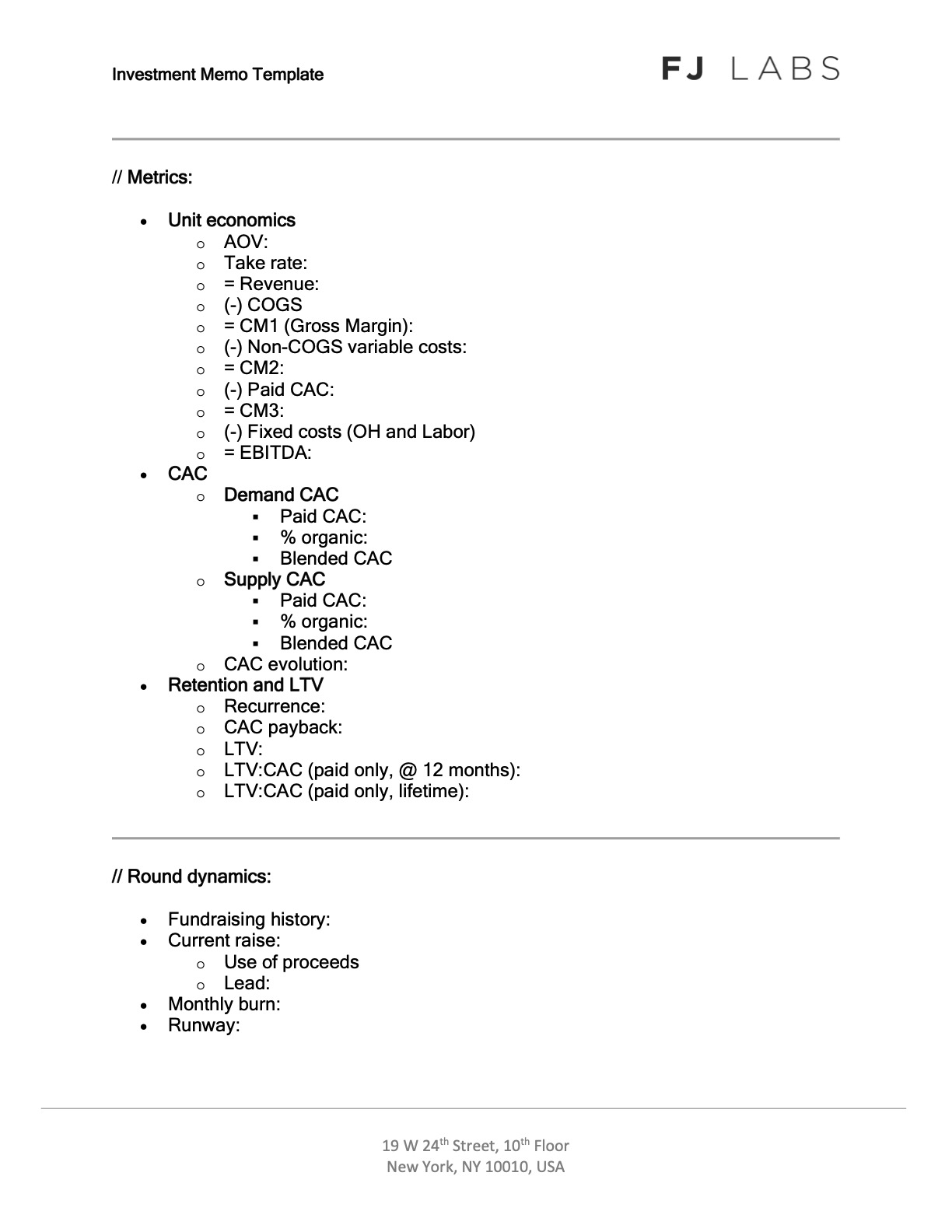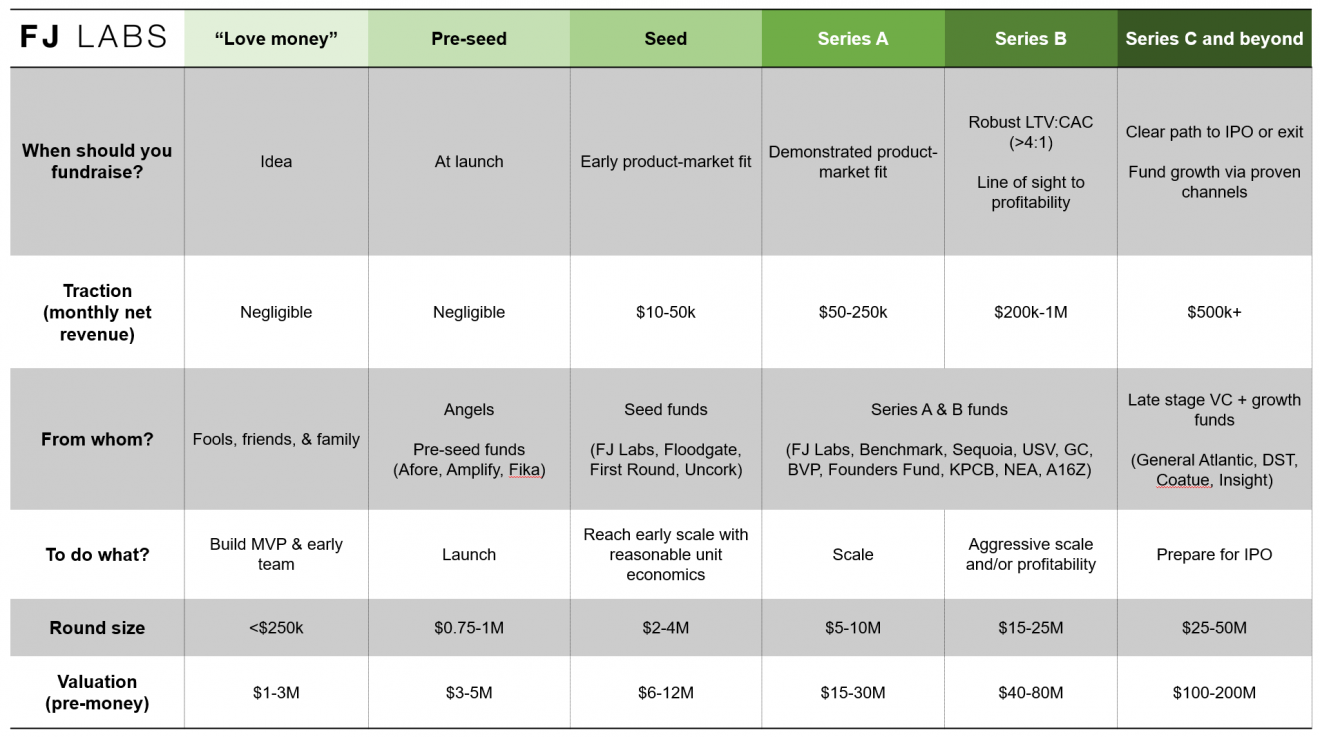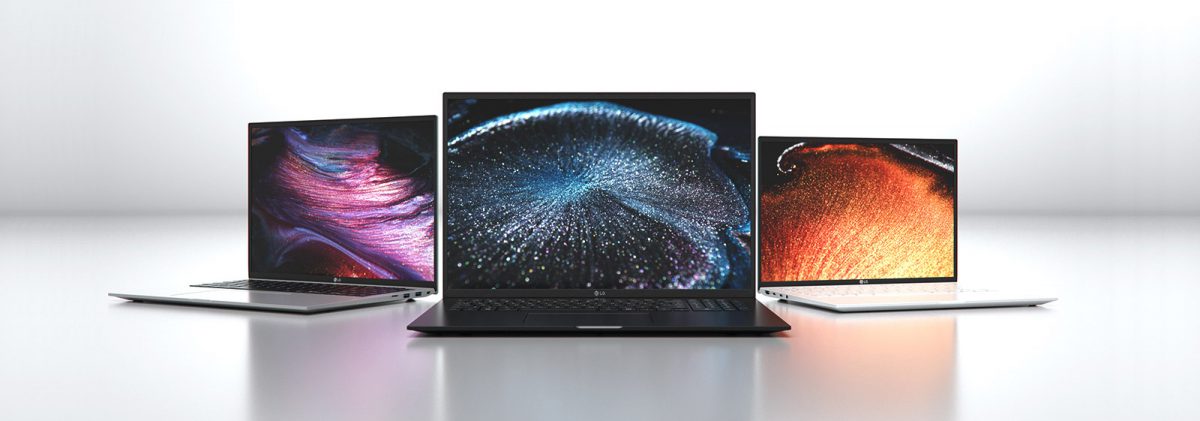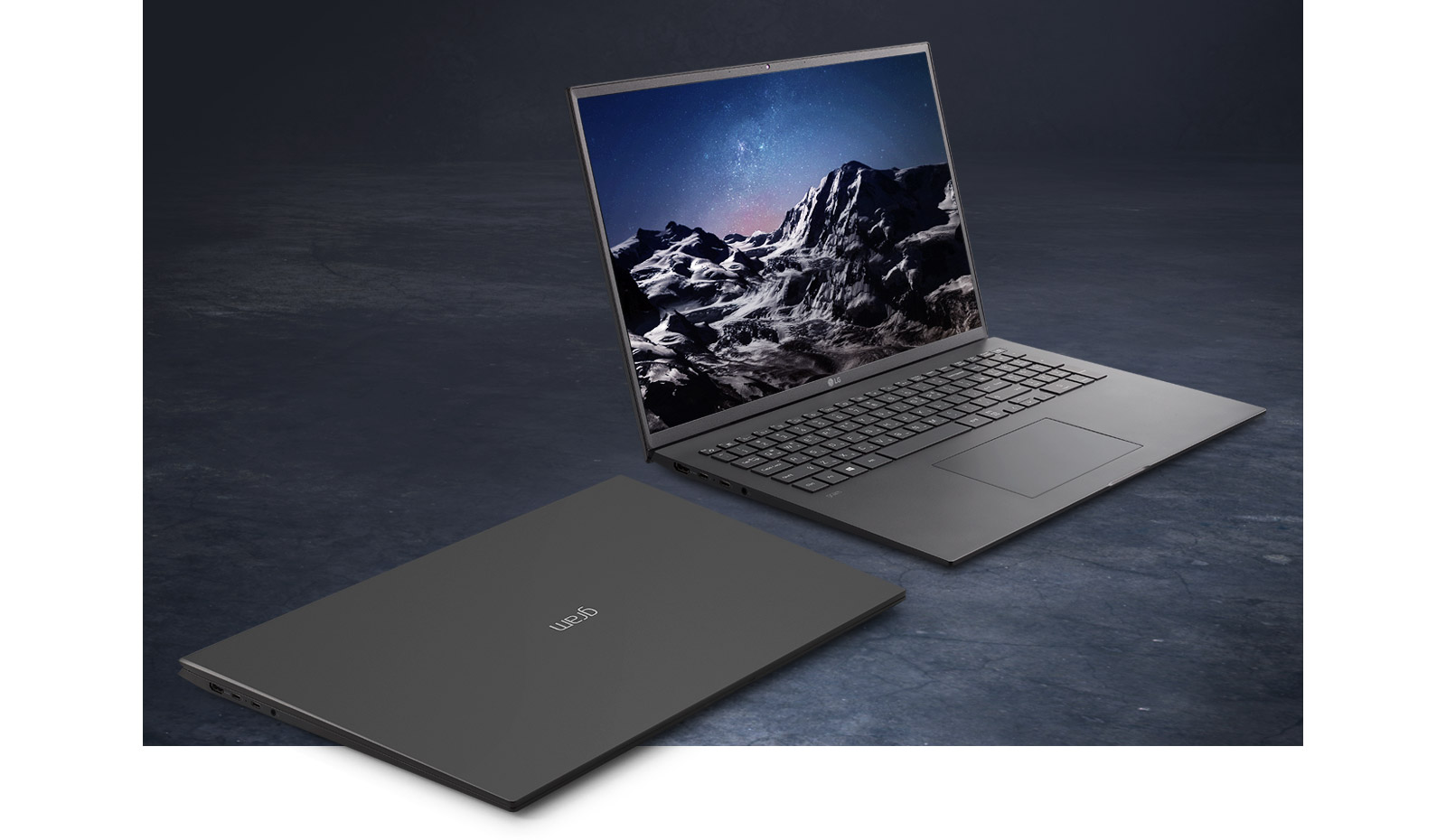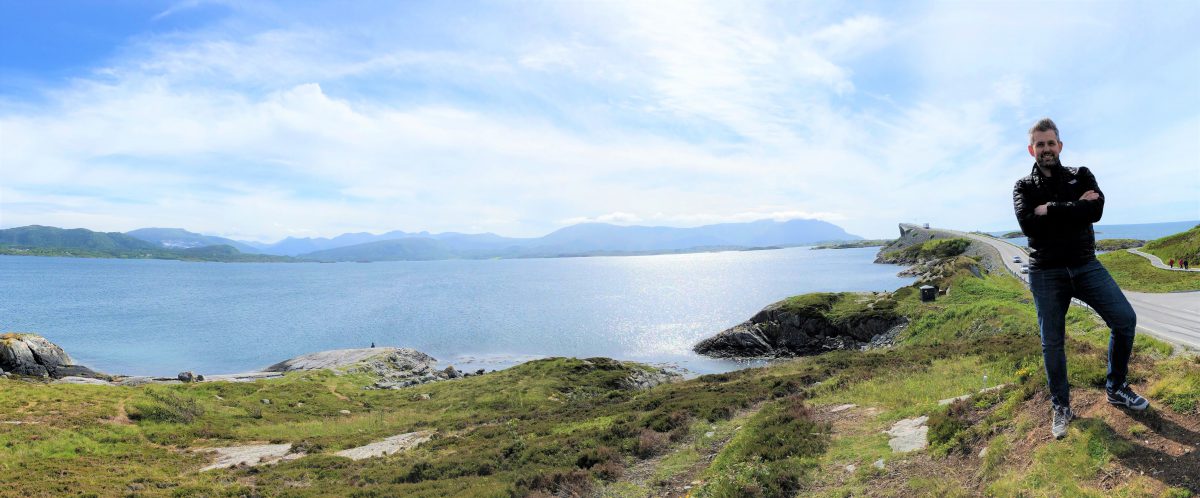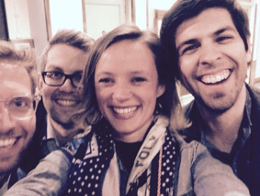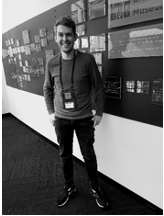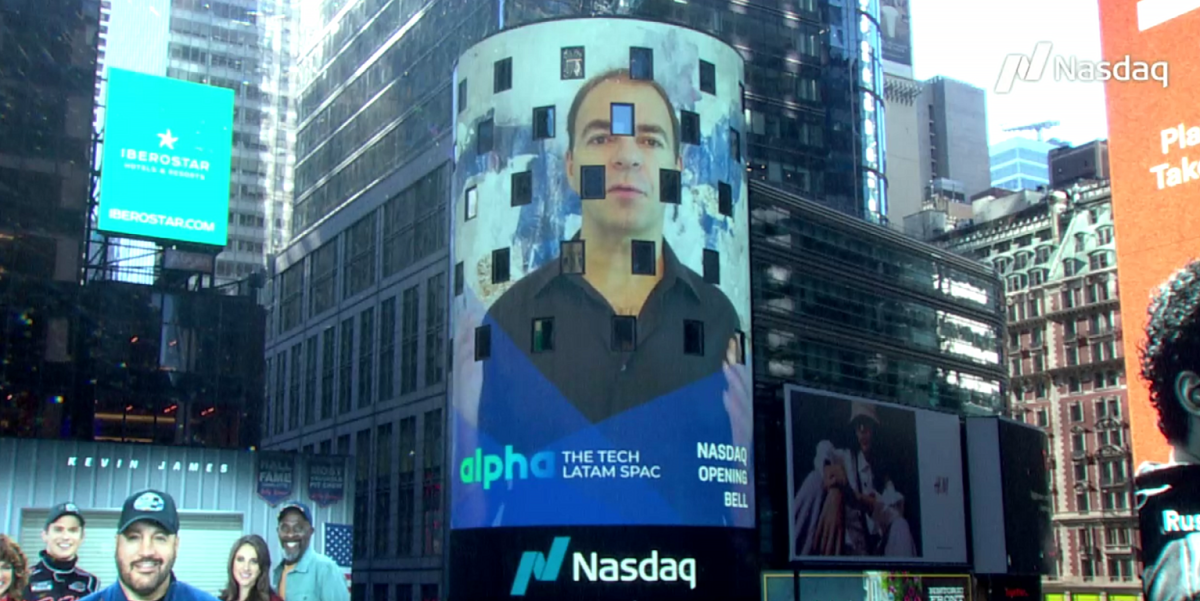我過去曾介紹過FJ Labs的投資策略,其中涵蓋了我們想要投資的公司類型。 今天,我想具體介紹一下我們如何評估初創公司。
我們使用四個標準:
- 我們喜歡這個團隊嗎?
- 我們喜歡這個行業嗎?
- 交易條款公平嗎?
- 這項業務是否符合我們關於世界走向的論點?
參加我們第一次評估電話會議的投資團隊成員在一小時內填寫一份標準化的交易備忘錄,根據這四個標準評估業務。 然後,他或她添加建議。 每週二,在兩小時的投資委員會會議上,我們都會回顧前一周的交易建議。 然後,何塞或我與最引人注目的企業進行第二次通話,我們深入挖掘感興趣的領域。
您可以在下面找到我們的交易備忘錄。
在一兩周內進行兩次 1 小時的通話后,我們決定是否投資。 我們也與初創公司分享我們的想法。 如果我們決定不投資,我們會告訴他們需要從他們身上看到什麼才能改變我們的想法。
1. 我們喜歡這個團隊嗎?
世界上每個風險投資家都告訴你:「我投資於非凡的人。 這是非常主觀的。 這種潛在的主觀性的問題在於,它可能導致認知偏差。
為了更客觀,我們評估了哪些創始人的技能導致了創業成功。 根據我們的分析, 我們希望有遠見的創始人在執行方面表現出色。 多年來,我們注意到這些的好代理是 講故事的技巧 和 分析技巧。 講故事的技巧是關鍵,因為能夠編織出引人入勝的故事的人更容易吸引資金,可以以更高的估值籌集資金,建立一支擁有更好人才的更好的團隊,簽署非凡的業務發展協定以更快地發展公司,並獲得大量新聞自由。
想像一下,你來推銷FJ Labs,你告訴我們:“我做了一個深入的市場分析。市場龐大而有吸引力。老牌企業行動緩慢,而我的方法卻與眾不同,而且更好。這是事實,看似令人信服,但這不是一個故事。一個故事聽起來更像是這樣:「這是我一生都面臨的問題。我討厭當前的用戶體驗。這讓我感到非常惱火,以至於我將餘生都奉獻給解決這個問題。因為我經歷過很多,所以我確切地知道解決方案是什麼。這種激情,以及你的故事和你正在建立的公司之間的交集,是非常引人注目的。這不是一個具體的例子,但它讓你了解我們正在尋找什麼。
如果你只有非凡的講故事技巧,那是不夠的。 也許你可以建立一個大型企業,但它可能經營不善或資本效率不高。 你可能會建立一家像 Fab.com 這樣的公司,在那裡你獲得了數億美元的收入,但永遠無法達到有效的單位經濟效益,而且公司也不賺錢。 或者,也許你建立了一家像Theranos這樣的公司,在那裡你銷售一個每個人都想相信但最終不是真的奇妙故事。
因此,我們尋找的第二件事是,創始人/首席執行官還必須以指標為導向,善於分析,並且知道如何執行他或她的願景。 他們真的需要了解他們所從事的業務。 他們需要能夠闡明他們的單位經濟效益。 即使他們的業務是預啟動的,他們也需要根據行業平均水平和他們所做的登陸頁面測試來瞭解他們的理論單位經濟效益。 然而,這些技能本身也是不夠的。 如果沒有講故事的技巧,這些創始人將建立小型的、有利可圖的企業,但不會成為行業定義的企業。
我們也在尋找表現出的熱情,但它通常在我們評估講故事的技巧時遇到。 同樣,我們也在尋找勇氣和堅韌。 也許你在到達你所處的位置時經歷了困難,但它不一定在那裡。 我們在西方享有足夠的特權,以至於許多人並沒有真正面臨逆境。 你可以上一所好學校,取得好成績,找到好工作,而且你的生活中永遠不會真正失敗。 然而,我們真的想瞭解您將如何應對在此過程中將面臨的無數挑戰,尤其是作為初次創業者。
我們的方法是在智力上挑戰向我們推銷的創始人。 我們挑戰他們的假設,他們期望在哪裡以及為什麼。 我們測試他們對此的反應。 如果他們在我們對他們業務的質疑的壓力下崩潰,那麼顯然他們將在他們作為企業家將面臨的無數失敗的更大壓力下崩潰。 歸根結底,您對我們挑戰的回應也會體現在您講故事和分析能力上。
總而言之, 我們真的想支援那些既有遠見又善於執行的稀有創始人。
2. 我們喜歡這個行業嗎?
值得一提的是,對於一些VC來說,擁有一支了不起的團隊就足夠了。 他們的理由是,非凡的團隊會弄清楚業務,即使他們一開始就不是一個引人注目的業務,或者沒有一個具有有吸引力的單位經濟的商業模式。
對於FJ Labs來說,情況並非如此。 美國每年大約有 5,000 家新的初創公司籌集了 50 萬美元或更多的資金。 這些初創公司的 5 年生存率平均為 7%,而對於沒有商業模式的公司來說,生存率要低得多。 相比之下,由於我們的紀律,我們在 50+ 退出中賺了 150% 的錢,而喜歡這項業務在其中起著重要作用。
有幾個標準使企業引人注目。 總潛在市場 (TAM) 是否足夠大? 如果沒有,您能否充分發展市場以支援該行業價值數十億美元的公司? 在市場環境中建立令人難以置信的有價值的大型企業有很多輔助因素。 您有能力成為市場領導者嗎? 這是可擴展的嗎? 成功也意味著你不會被去仲介化,這意味著供需方面存在合理的碎片化。 但對我來說,這些因素都屬於以下子集:「這裡是否有機會建立一家價值數十億美元的公司?
除此之外,在評估業務時,我們最關心的一件事是: 它是否具有有吸引力的單位經濟效益? 如果創業公司是預啟動的,那麼這個問題適用於你的理論單位經濟效益。 如果創業是在啟動后,我希望討論實際的單位經濟效益。 請注意,為了簡潔明瞭起見,我假設本文的讀者知道我所說的單位經濟學是什麼意思。 我將很快創建一個單獨的帖子,介紹 FJ Labs 如何看待單位經濟學。
從我們的角度來看,良好的單位經濟效益是指初創公司可以在運營的前 6 個月以凈貢獻獲利率為基礎收回其客戶獲取成本 (CAC)。 我們還希望這家初創公司在 18 個月內將其 CAC 提高 3 倍。 在我們接觸過的最好的企業中,由於負流失,他們不知道長期價值 (LTV) 與 CAC 的比率 (LTV:CAC) 是多少。 即使他們失去了一些客戶,剩下的客戶仍然購買得越來越多,LTV:CAC 可能是 10:1 甚至 20:1。
請注意,此規則有一些例外。 對於一個具有負流失率的超級粘性 SaaS 業務,並且基本上是無窮無盡的客戶生命週期,如果需要 12-18 個月才能收回其 CAC,這是可以的。
對於啟動前的業務,我們希望創始人已經考慮過單位經濟效益應該是什麼。 他們應該知道行業的平均訂單價值,並期望與之保持一致。 他們還應該對銷售商品的潛在成本 (COGS) 有很強的把握,因此應該對每筆訂單的利潤有很好的瞭解。 還應該知道該行業的平均復發率。
未知的部分是客戶獲取成本。 但是,您可以對其進行測試。 您甚至可以在構建功能性網站之前創建描述概念的精美登錄頁面。 然後,您可以在行銷上花費一些錢,並且可以對每次點擊成本、每次註冊成本以及這些註冊的潛在購買做出合理的假設。 您可以再次使用該行業的平均值,即此類別中網站的訪問者購買商品的百分比。
請注意,我還希望您評估客戶獲取管道的密度。 您能否每月花費 50K、每月 100K、每月 500K 或更多,並且仍然具有有吸引力的單位經濟效益? 如果沒有,你手上有一個有趣的小企業,但沒有一個可擴展的風險投資支持的企業。
如果您是發佈后,我們希望您向我們介紹您的實際單位經濟效益。 他們可能還沒有達到我們預期的 3:1 18 個月凈貢獻率與 CAC 比率,因為您的 CAC 太高,或者您的每筆訂單或重複性貢獻率太低。 然而,如果你能引導我們了解為什麼你的單位經濟效益會隨著規模而達到目標,而不需要宇宙中所有的恆星對齊,我們就可以忽略這些。
例如,也許您從事送餐業務。現在,您向送餐司機支付每小時 15 美元的費用,而他們每小時只送一次餐。結果,你的經濟被淹沒了。但是,如果你告訴我,“看,現在我的GMV或商品銷售總額為每月10萬美元。一旦我在同一地區每月達到 30 萬美元,這將在未來 12 個月內保守地發生,司機每小時將進行三次送貨。每次交付的成本將降至 5 美元,在這種規模下,單位經濟效益起作用。這是一個可信且引人入勝的故事,如果你能說服我,你有一個合理的計劃,在未來12個月內在這些地區增加兩倍。
通過規模化提高獲利率的例子數不勝數,因為您可以利用供應商的優勢,並在營銷和客戶參與方面做得更好。 歸根結底,你只需要一個引人入勝的故事,說明即使你的單位經濟效益還沒有達到目標,你也將如何實現規模化。
總結本節,雖然我們在評估企業的吸引力時會考慮很多事情,但它們都歸結為: 我們能否建立一個具有吸引力的單位經濟效益的十億美元企業?
3. 交易條款是否公平?
在一輪融資中,有許多條款:
- 我們能以什麼估值進行投資?
- 公司籌集了多少資金?
- 是首選嗎?
- 它是可轉換票據還是實際股權回合?
- 我們是否有拖拽權、標籤權、按比例和優先購買權?
我們所做的所有投資都至少有 1 倍的清算優先權,因為我們不希望在投資者虧損時創始人賺錢。 換句話說,我們永遠不會投資普通股。 除此之外,我要重點討論的術語是估值。 我們關心估值。 這並不是說我們以低估值進行投資。 我不認為互聯網創業投資存在低估值這樣的事情。 但是,考慮到牽引力、機會和團隊,我們希望以合理的估值進行投資。
在我們關注的領域,即市場,對不同階段的估值和牽引力有一套合理的預期。 我將舉幾個例子,但請注意,範圍涵蓋了中位數。 有很多例外,尤其是在高端。 換句話說,標準差相當高。 第二次成功的創始人可以以更高的估值籌集資金。 一家增長速度比平均水準快得多的公司通常可以「跳過一個階段」,讓其 A 輪融資看起來像 B 輪融資,或者讓 B 輪融資看起來像 C 輪融資。但是,這些是一般準則,應該對大多數企業家有所説明。
除了在正確的階段籌集到適當的金額外,風險投資公司通常還按階段進行專業化。 您需要在正確的階段與正確的風險投資人交談。 還有一個內在的增長預期,您需要在大約 18 個月內從一個階段到另一個階段。
對於下面的例子,我將談論具有10%到20%獲取率的市場。 對於種子前輪,您基本上處於發佈階段,沒有銷售或銷售可以忽略不計。 如今,大多數種子前初創公司都在以 3-5M 美元的投前估值籌集 750 至 100 萬美元。
在種子期,您每月的 GMV 為 100 到 200 美元,佔 15%,這為您提供了 30K 的凈收入。 您的凈收入通常在每月 10 到 50 美元之間。 您通常以 $6-12M 的價格籌集 $2-4M。 現在,從您的種子輪,您的 GMV 每月為 150K,到您的 A,我們預計您每月從 150 美元增加到約 650K,滯後 18 個月。 換句話說,該階段的預期增長水準是每年 300%,或每月增長 15%。
而你的A輪融資,一旦你的GMV達到每月50萬-100萬美元,你就可以以1500-3000萬美元的投前估值籌集5-1000萬美元。 平均約為 $7M,前期 $18M,后 $25M。 因此,我們預計您在 18 個月後的 GMV 中每月將獲得 2-4M 美元。 然後,您可以以 $40-80M 的價格籌集 $15-25M 的 B 輪融資。 我包括我們的內部市場矩陣作為參考。
多年來,這一直是我們預設的內部框架,但僅限於抽成率為 10-20% 的市場,這曾經是我們的麵包和黃油。 然而,現在我們主要投資於B2B市場,這些市場通常有1-5%的抽成率。 該框架也不適用於SaaS業務和電子商務業務。
此外,還不清楚你應該從誰那裡籌集資金,以及對融資收益的期望是什麼。 投資者和風險投資人通常按階段進行專業化,您需要在正確的階段與正確的風險投資人交談。 因此,我重做了矩陣,使其更清晰並涵蓋了大多數情況。
為了解決每個階段的預期牽引力,我從使用商品總量 (GMV) 作為參考指標轉向凈收入。 這使我們能夠在不同的商業模式中具有可比性,儘管仍然存在一些差異,因為大多數SAAS業務的獲利率為90%+,而大多數市場的獲利率為60-70%,電子商務獲利率各不相同。
雖然有明確的行業平均水準,但一些風險投資公司對估值並不敏感,因為在他們看來,唯一重要的是獲得產生所有回報的最佳交易。 Venture 遵循冪律,而不是正態高斯分佈。 每十年就會有 2 家超級獨角獸——在美國生態系統中創建的價值超過 100B 美元的初創公司。 它們佔所有風險投資回報的 40%。 除此之外,每十年就會有20家十角獸(價值超過100億美元的公司)創建,佔所有風險投資回報的另外40%。 每十年創造的100家左右的獨角獸佔剩餘回報的大部分。
大多數VC都在玩「強力球」。。 他們想成為超級獨角獸彩票中獎者,並願意付出任何代價來獲得他們。 他們在大多數投資中虧損是可以的。 FJ Labs 不以這種方式運作。 我們希望我們投資的所有初創公司都具有可行性,這就是為什麼我們關心他們的單位經濟效益和投資估值。
這就是我們投資的50%以上的初創公司賺錢的原因。 我們經常以500萬美元的投前估值進行投資,並以3000萬美元的估值退出,因為該公司表現不錯,但沒有像最初預期的那樣擴大規模。 如果我們只是在尋找獨角獸,並願意為這些初創公司支付過高的費用,那麼我們就會在這樣的投資上賠錢。
請注意,我們推動公平估值不僅僅是出於自身利益。 我們真的認為,當創始人乙太高的價格籌集太多資金時,他們會對自己造成傷害。 然後,它們被定價為完美,如果事情沒有按計劃進行,並且沒有增長到他們的估值,它可能會扼殺公司,因為很少有人願意經歷一輪又一輪的下跌。 它們在心理上都留下了疤痕,並且考慮到大多數回合中的反稀釋條款,對上限表產生了負面影響。 此外,籌集過多資金的人往往會花錢,而不是盡可能地提高資本效率。
當然,也有反例,一些公司不斷成功地領先於牽引力,並使其成為優步,但在此過程中還有更多的屍體,包括我們自己的 Beepi。
4. 這項業務是否符合我們關於世界走向的論點?
我們專注於市場,並有關於市場未來的具體論點。 目前,我們特別關注:
- 垂直化水準(多類別)平臺
- 市場選擇市場
- B2B市場
由於在如此多的行業中看到了如此多的交易,再加上作為歷史和趨勢的學生,我們對這些行業的未來有非常明確的看法。 我們有關於食品的未來、工作的未來、金融、貸款、房地產和汽車等的具體論點。
我們投資的大多數企業同時觸及其中的許多主題。 我將很快寫一篇詳細的博客文章,介紹我們目前的投資論點。
結論:
當我們在兩個 1 小時的電話會議中評估初創公司時,我們會根據我們涵蓋的四個維度來評估它們:團隊、業務、交易條款以及與我們論文的一致性。 我們希望同時滿足所有四個標準:了不起的創始人,偉大的企業,以公平的條件籌集資金,符合我們的論點。 如果你是一個了不起的創始人,但覺得估值太高或業務不引人注目,我們不會投資。 同樣,如果這是一個好主意、好條款和完整的論文,但我們覺得團隊很平庸,我們就不會投資。
在這四個變數中,我們在論文上有點靈活。 雖然我們主要是市場投資者,但我們也投資於支持市場但本身可能不是市場的初創公司。 在非常特殊的情況下,我們投資於超出範圍的想法,但我們發現這些想法非常引人注目。 我們也支援那些過去為我們取得成功的創始人,即使他們的新創業公司不是一個市場。 這就是我們最終投資電動垂直起降飛機初創公司 Archer的原因。 我們支持佈雷特·阿德科克(Brett Adcock)和亞當·戈德斯坦(Adam Goldstein)的工作力市場初創公司Vettery,該公司已出售給Adecco。 我們很高興能在他們的新創業公司中支持他們,儘管我們在電動自動駕駛飛機方面缺乏領域專業知識。
要求我們共同滿足四項投資標準,這與許多矽谷風險投資公司決定的投資方式大不相同。 他們不惜一切代價支持優秀的團隊,而不管當前的單位經濟效益如何,並期望他們能解決這個問題。 然而,如果你分析風險回報的分佈,我們的方法似乎是合理的。 65% 的投資回合未能獲得 1 倍資本回報,只有 4% 的回報率高於 10 倍資本。 目前,我們在 218 次退出(包括所有失敗)中實現了 61% 的內部收益率,並且從超過一半的退出投資中獲利。
請注意,我們選擇這種方法的部分原因是,在過去,大多數獨角獸和十角獸都來自矽谷。 我選擇住在紐約是出於個人原因:我喜歡這裡的知識份子、藝術和社交場所。 從紐約到我家居住的尼斯也比從三藩市容易得多,而且與歐洲的時差也更容易管理。 換句話說,我選擇紐約是因為知道這會讓我在財務上比住在矽谷的時候更不成功,因為我預期不會看到並能夠投資最好的公司。 我對這個選擇感到滿意,因為我優化了我的生活,以獲得幸福和滿足感,而不是經濟回報。
隨著開源、AWS 和低代碼/無代碼革命的出現,我們看到了創業公司的民主化。 公司正在比以往任何時候都更多的地區創建和擴展。 我們看到像Shopify這樣的超級獨角獸出現在矽谷之外(在這種情況下是在多倫多)。 COVID 只會加速這一趨勢,因為比以往任何時候都更多的公司正在以分散式方式建立。
因此,我甚至預計我們的相對劣勢會隨著時間的推移而消失,我們將能夠從早期階段投資更多的獨角獸,特別是因為我們在市場上不斷改進的品牌使我們能夠投資矽谷最好的交易。 迄今為止,我們已經投資了 25 家成為獨角獸的公司,以及另外 25 家已經成為獨角獸的公司,但自我們投資以來,它們的估值增加了超過 10 億美元。 儘管情況有所改善,但我們將保持紀律,並繼續應用我們的四項選擇標準。
你有它:我們如何按時評估初創公司! 既然您了解了我們如何決定是否投資您的初創公司,您應該相應地改進您的推銷。
祝你好運!


